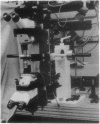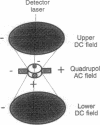Abstract
A method is described that provides for detection and identification of single molecules in solution. The method is based on fluorescence correlation spectroscopy, which records spatio-temporal correlations among fluctuating light signals, coupled with devices for trapping single molecules in an electric field. This technique is applied to studies of molecular evolution, where it allows fast screening of large mutant spectra in which targets are labeled by specific fluorescent ligands. The method expands the horizon in molecular diagnostics by making it possible to monitor concentrations down to (less than) 10(-15) M without any need for amplification.
Full text
PDF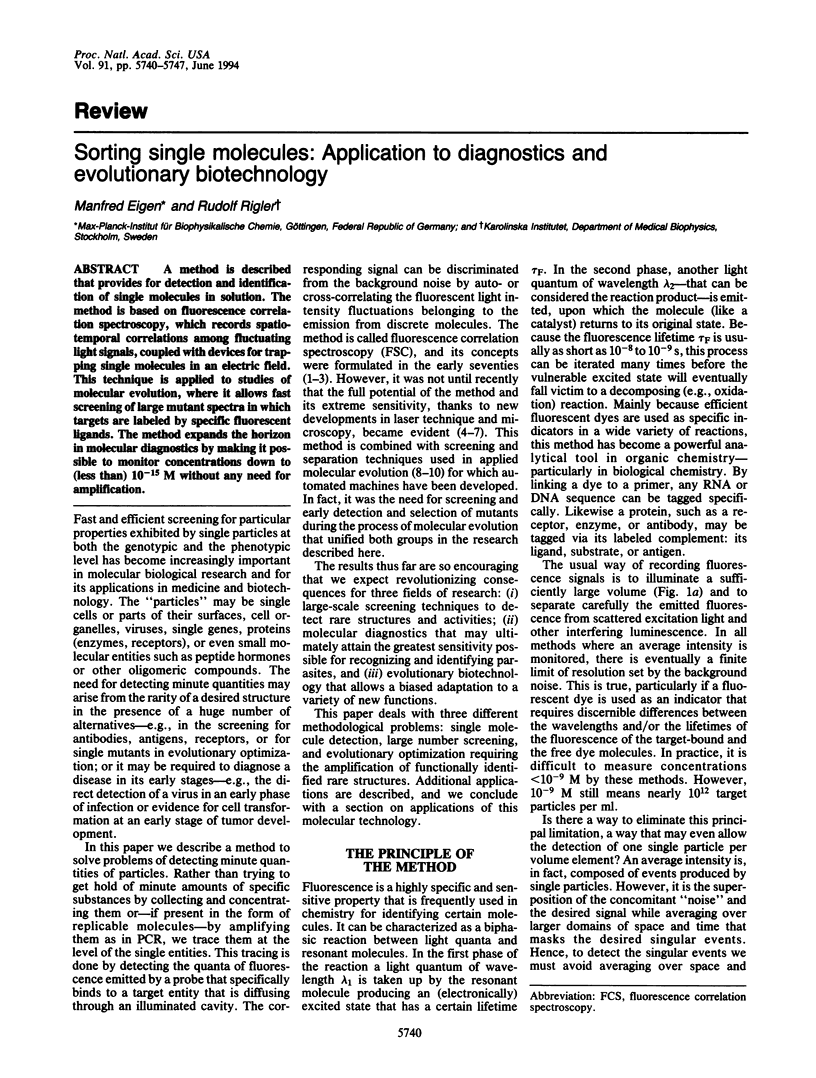
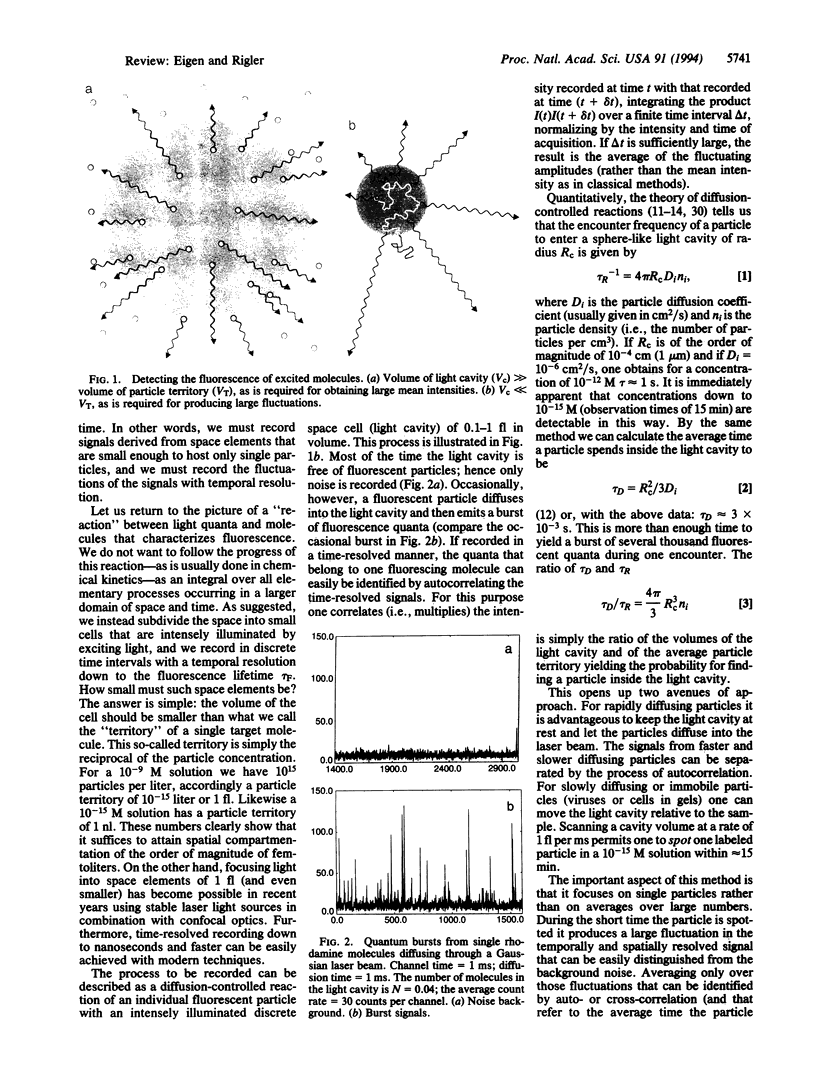
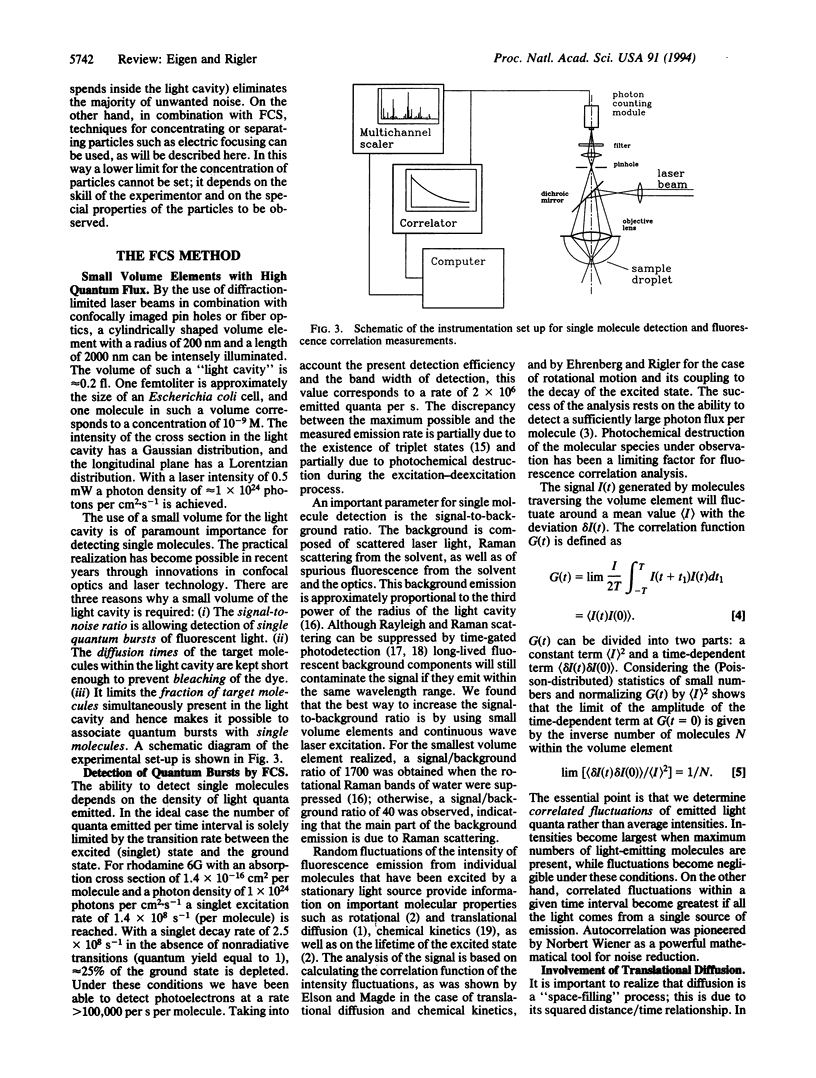
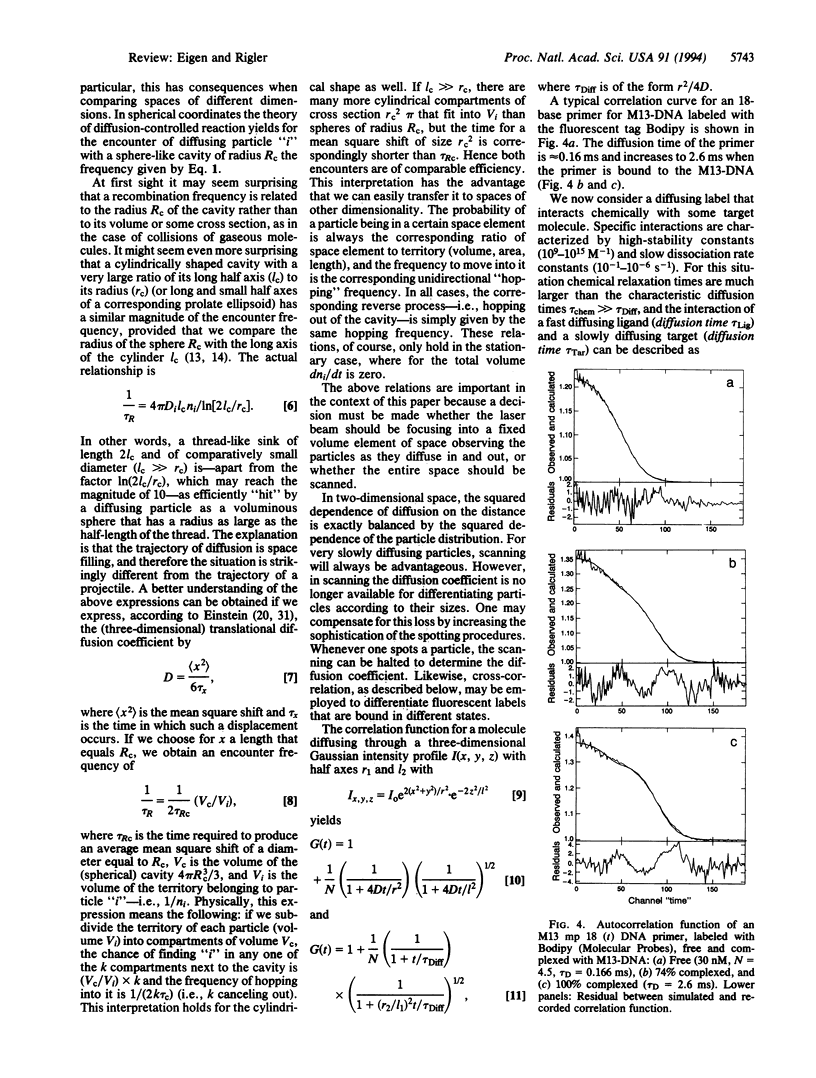
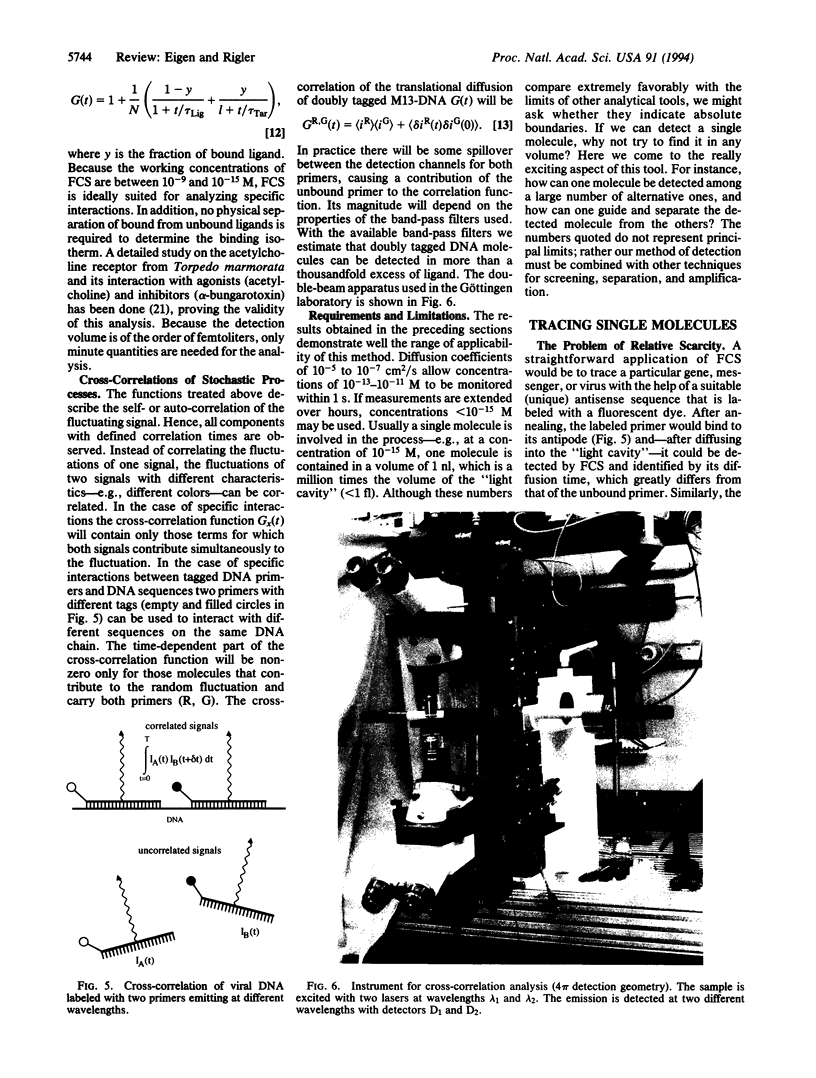
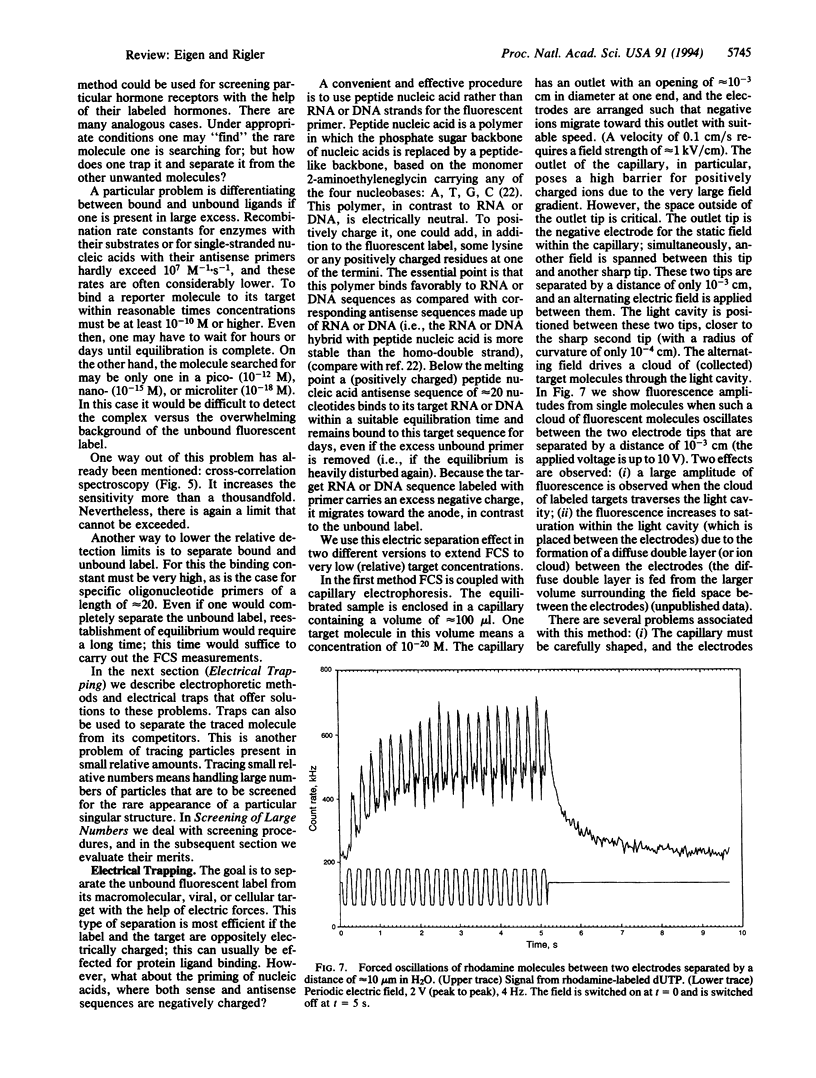
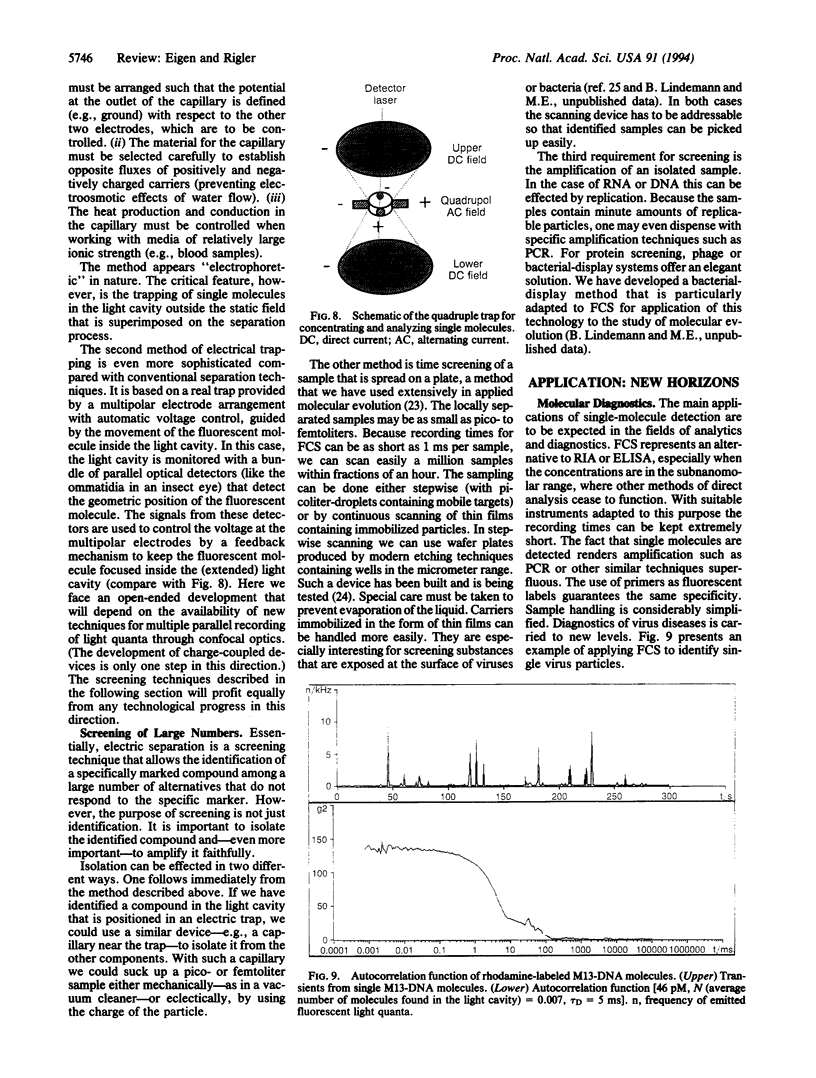
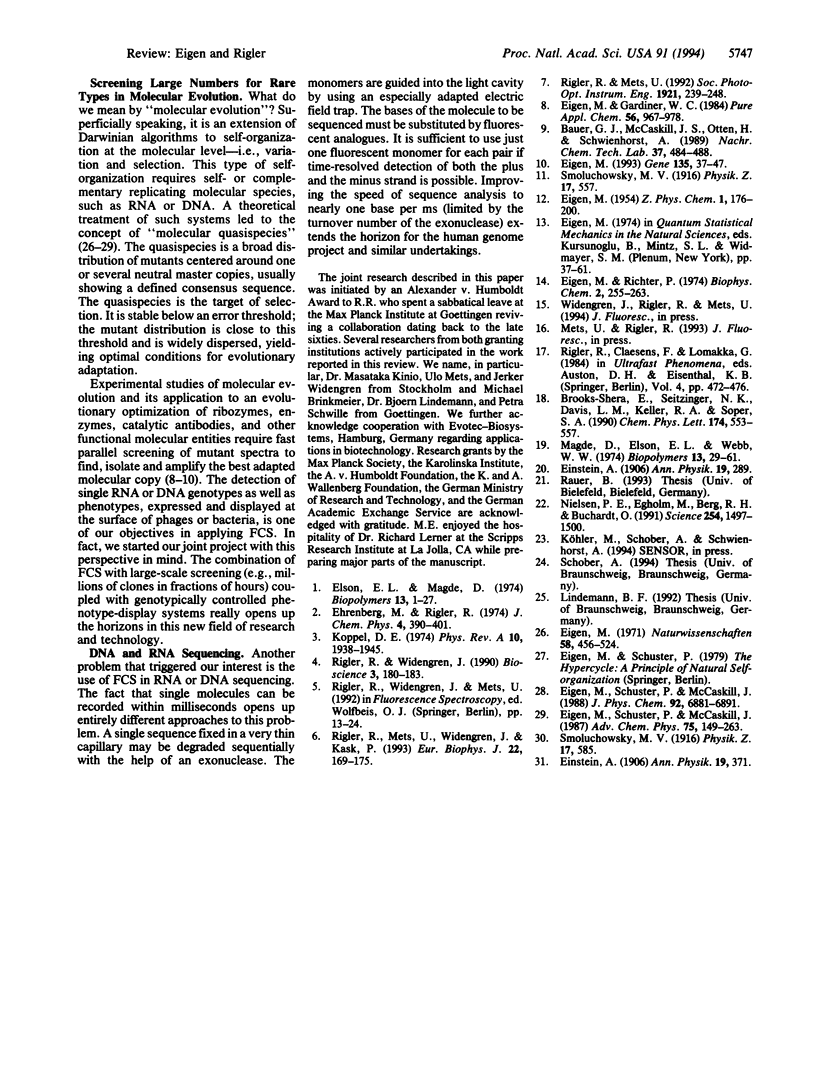
Images in this article
Selected References
These references are in PubMed. This may not be the complete list of references from this article.
- Eigen M. The origin of genetic information: viruses as models. Gene. 1993 Dec 15;135(1-2):37–47. doi: 10.1016/0378-1119(93)90047-7. [DOI] [PubMed] [Google Scholar]
- Magde D., Elson E. L., Webb W. W. Fluorescence correlation spectroscopy. II. An experimental realization. Biopolymers. 1974 Jan;13(1):29–61. doi: 10.1002/bip.1974.360130103. [DOI] [PubMed] [Google Scholar]
- Nielsen P. E., Egholm M., Berg R. H., Buchardt O. Sequence-selective recognition of DNA by strand displacement with a thymine-substituted polyamide. Science. 1991 Dec 6;254(5037):1497–1500. doi: 10.1126/science.1962210. [DOI] [PubMed] [Google Scholar]
- Richter P. H., Eigen M. Diffusion controlled reaction rates in spheroidal geometry. Application to repressor--operator association and membrane bound enzymes. Biophys Chem. 1974 Oct;2(3):255–263. doi: 10.1016/0301-4622(74)80050-5. [DOI] [PubMed] [Google Scholar]




